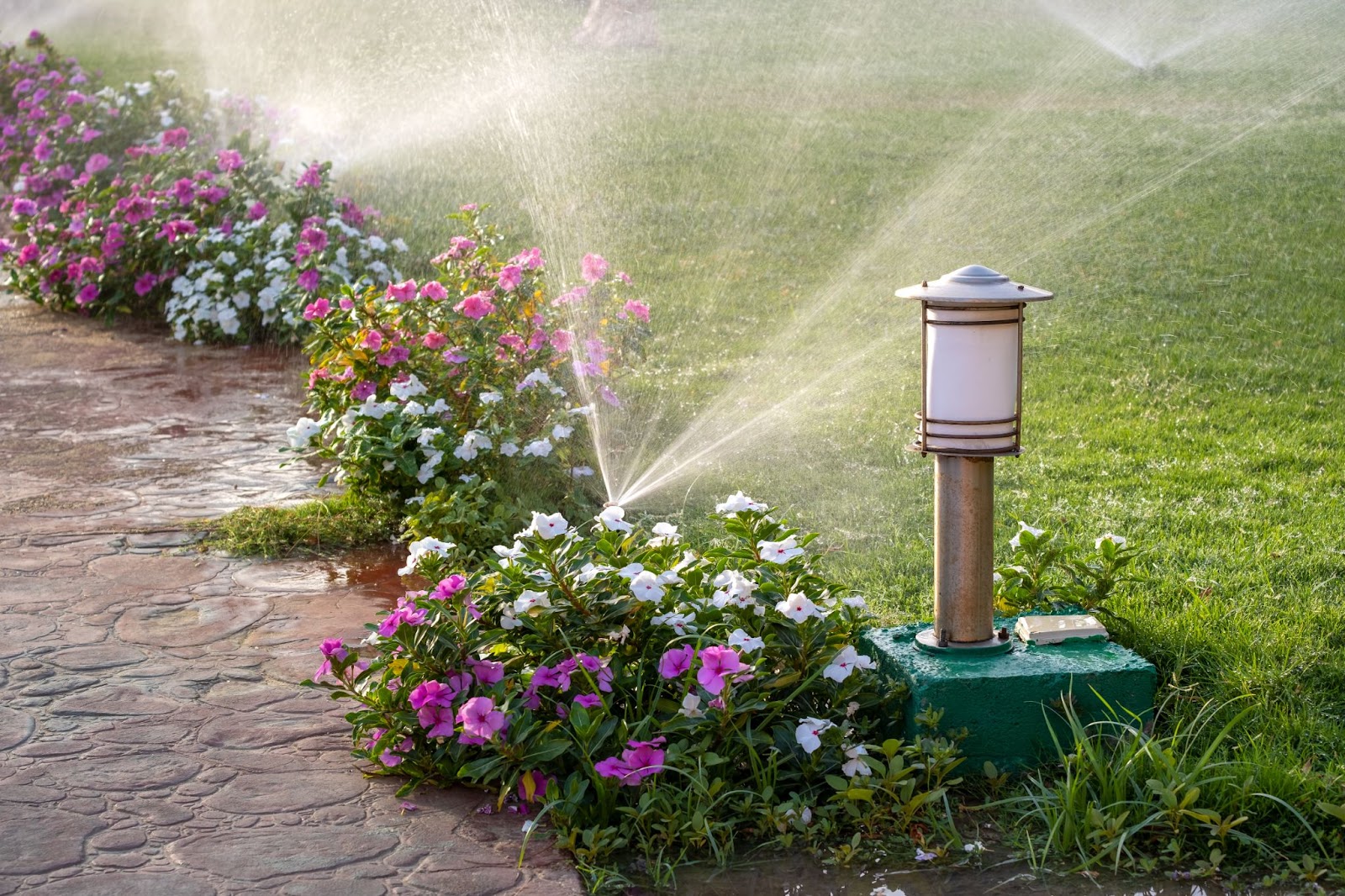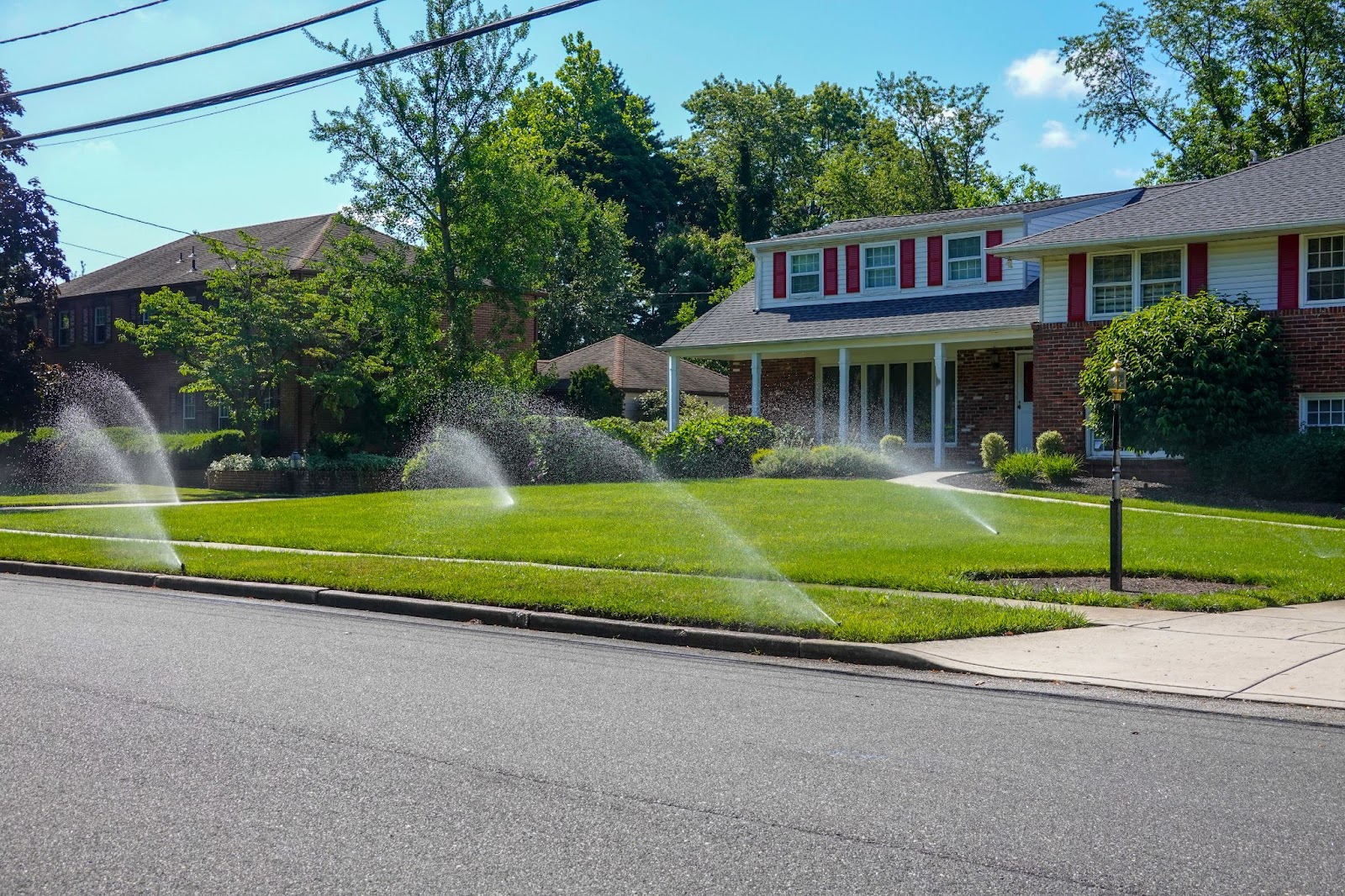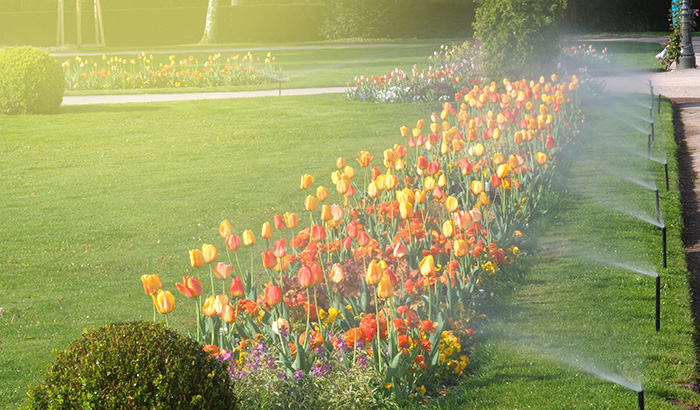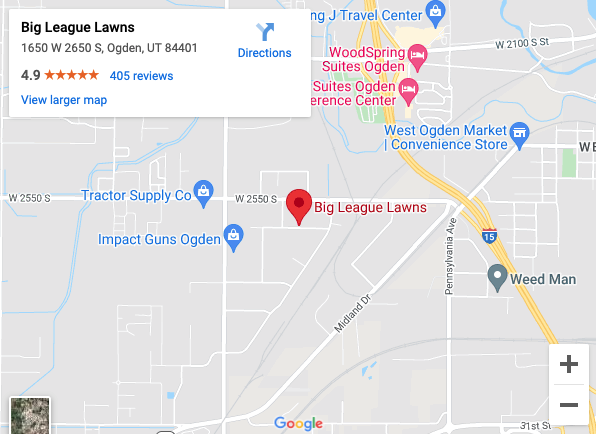A well-maintained sprinkler system is the heartbeat of any lush, vibrant lawn. Beyond watering, quality sprinklers nurture your garden with precision and care.
In this guide, we’re diving deep into the world of sprinkler care, unlocking tips and tricks that make maintaining your lawn’s lifeline simple and enjoyable.
Whether you’re a seasoned gardener or stepping into the world of lawn care for the first time, we aim to arm you with the knowledge and tools you need to keep your sprinkler system running like a well-oiled machine.
Tip 1: regular inspection
Your sprinkler system is the guardian of your lawn’s health, quietly working behind the scenes to ensure every corner of your garden stays hydrated and happy. Regular inspections of this vital system are key to catching any sneaky issues before they become big problems. They ensure your lawn remains a lush, inviting oasis.
Catching issues early saves you time, money, and a lot of lawn headaches. A small leak or a misaligned sprinkler head might seem minor, but left unchecked, these might lead to uneven watering, wasted water, and even damage to your lawn or the system itself.

Your step-by-step inspection guide
Visual check
Start with a simple walk around your garden, looking for any obvious signs of trouble, like exposed pipes, visible leaks, or sprinkler heads that seem out of place.
Run a test cycle
Activate your sprinkler system for a short cycle during daylight hours, so you are easily able to observe each sprinkler head in action. Look for any that don’t pop up as they should or spray water erratically.
Check for leaks
Pay attention to the area around each sprinkler head. Puddles or excessively muddy spots indicate a leak that’s wasting water and could be drowning sections of your lawn.
Inspect sprinkler heads
Turn off the system and closely examine each sprinkler head. Look for clogs caused by dirt or debris and check if any heads are damaged or worn out. A clogged or damaged head won’t distribute water effectively, leading to dry spots or water wastage.
Evaluate water pressure
Too much or too little pressure affects how well your system waters your lawn. Sprinkler heads spraying a fine mist might indicate high pressure, while low pressure could cause heads not to fully pop up or water not to reach its intended distance.
Assess coverage
Ensure each section of your lawn receives adequate water from the sprinklers. Look for any dry spots indicating a head might be misaligned or an area not covered adequately.
Tip 2: cleaning sprinkler heads
Ensuring your sprinkler heads are clean maintains clarity and efficiency; this allows water to flow freely and reach every thirsty blade of grass. Clean sprinkler heads are the secret behind that even, refreshing hydration your lawn craves, ensuring every drop of water contributes to the vibrant health of your garden.
Like a clean lens captures a perfect picture, a clean sprinkler head ensures optimal watering efficiency and coverage. Over time, dirt, grass clippings, and other garden debris clog sprinkler heads, leading to uneven watering, wasted water, and unsightly dry spots. Keeping them clean ensures your lawn gets the nourishment it needs without any wasteful overspray or neglected areas.
A guide to sparkling clean sprinkler heads
Safety first
Begin by turning off your sprinkler system to prevent unexpected showers and keep the cleaning process safe and dry.
Visual inspection
Gently clear any visible debris around each sprinkler head with your hands or a small brush, being careful not to damage the head or disturb its alignment.
Remove the sprinkler head
For a deeper clean, unscrew the top of the sprinkler head or remove it from the riser. This step varies by sprinkler model, so if unsure, refer to the manufacturer’s instructions.
Rinse and clean
Hold the removed sprinkler head under a stream of water to flush out any dirt. Use a soft brush to gently remove stubborn debris. A toothpick or compressed air will dislodge hidden dirt for intricate parts without causing damage.
Check for wear and tear
As you clean, inspect each sprinkler head for signs of wear or damage, such as cracks or worn seals. Replacing damaged parts is crucial for maintaining an efficient system.
Reassemble and test
Once clean, reattach the sprinkler head or replace it on the riser. Turn your system back on and run a test cycle to ensure everything is working correctly and that heads are properly aligned.
Adjust as necessary
After cleaning, you might find some sprinkler heads need slight adjustments to ensure even coverage. Make these tweaks while the system is running so you will immediately see the impact of your adjustments.
Tip 3: adjusting sprinkler heads
Fine-tuning your sprinkler heads is like orchestrating a symphony where every note harmonizes to create the perfect melody for your lawn. Adjusting these pivotal components ensures that every inch of your garden receives the love and hydration it deserves, promoting even water distribution that’s key to a healthy, thriving lawn.
Whether dealing with a new landscape feature or seasonal changes, tweaking your sprinkler heads makes all the difference in achieving that lush, evenly green appearance.
How to adjust your sprinkler heads for harmony in hydration
Know your sprinkler type
Familiarize yourself with the types of sprinkler heads installed in your lawn — fixed, rotary, or spray heads — as each has its adjustment method.
Adjusting fixed spray heads
Fixed heads often require a simple twist of the sprinkler body or a screw adjustment at the top to alter the spray pattern and reach. Aim for a gentle overlap of water coverage to avoid dry patches.
Tuning rotary heads
Rotary heads cover larger areas and typically have adjustment screws or dials. Use these to fine-tune the arc and distance of the water spray. Achieving a seamless overlap between the arcs ensures comprehensive coverage.
Modifying spray heads
For spray heads, adjustments usually involve changing the nozzle to alter the spray pattern or using a screwdriver to adjust the screw on the top of the head. This may increase or decrease the spray range and intensity, allowing you to customize the coverage based on your lawn’s needs.
Observation and optimization
After adjusting, observe your system in action. Look for even coverage and make minor tweaks as needed. This ongoing attention ensures your lawn stays hydrated in every season.
Seek symmetry in coverage
Aim for each spray to reach the base of the next sprinkler head, a technique known as “head-to-head coverage.” This ensures every part of your lawn benefits from even hydration.
Tip 4: seasonal adjustments
Embracing the rhythm of the seasons is a dance that keeps your lawn in step with nature. As the year unfolds, the needs of your garden shift with the changing weather, making seasonal adjustments to your sprinkler settings a wise choice. This thoughtful tuning ensures your lawn receives precisely what it needs, conserving water while fostering its health and vibrancy.
Just as you swap a warm coat for lighter wear with the arrival of spring, your lawn’s watering needs change from season to season. The cool, damp days of spring require less irrigation than summer’s hot, thirsty days.
Adjusting your sprinkler settings in harmony with these changes prevents overwatering in cooler months and under-watering when the heat sets in, ensuring your lawn remains a beacon of green health year-round.

Tips to make the adjustments
Know your system
Familiarize yourself with adjusting the timers and settings on your sprinkler system. Many modern systems offer programmable options that automatically adjust based on weather data.
Observe and adapt
Keep a close eye on your lawn and the weather. Be ready to tweak your settings in response to unexpected weather changes, such as unseasonal rain or heatwaves.
Embrace technology
Consider investing in a smart irrigation controller. These innovative devices adjust your watering schedule based on real-time weather conditions, ensuring your lawn receives optimal hydration without wasting water.
Tip 5: checking for leaks and damages
Leaks and damages in your system are silent saboteurs, wasting water and leading to uneven lawn health. Water is a precious resource, and every leak in your sprinkler system means wasted water and increased bills.
But the impact doesn’t stop at inefficiency; it extends to your lawn’s health. Overwatered areas can drown grass roots, inhibit oxygen exchange, and encourage the growth of fungi and pests. Conversely, areas that receive too little water suffer, turning your lush lawn into a patchwork of health and distress.
Detecting and addressing the culprits
Conduct a visual inspection
Regularly walk through your lawn, especially after watering cycles. Look for signs of trouble, like unusually wet areas, soggy ground, or eroded soil, which could indicate leaks.
Listen for hisses or gurgles
Sometimes, leaks make themselves known through sound. Listen carefully to your system while running; a hissing or gurgling noise might lead you to a leak’s source.
Check the sprinkler heads
Inspect each sprinkler head for damage or blockages. Cracked or broken heads leak and can alter the spray pattern, reducing coverage.
Monitor water pressure
A significant drop in water pressure could indicate a leak in the system. Conversely, too high pressure can damage components over time, leading to leaks.
Repair and replace
For simple issues like clogged or slightly damaged sprinkler heads. More significant leaks or system damage often require professional attention. Turn off your system to prevent further damage and call in the experts.
Seasonal checks
Make leak and damage checks part of your seasonal lawn care routine. This proactive approach helps catch issues before they escalate, ensuring your lawn remains a vibrant, healthy haven.
Tip 6: winterizing your sprinkler system
As the seasons shift and the air takes on a crisp chill, it’s crucial not to forget our loyal guardian of green, the sprinkler system. Winterizing your sprinkler system is an essential act of care that shields it from the harsh embrace of winter, prevents freeze damage, and ensures it’s ready to spring back into action when warmer days return.
Especially in colder climates, where the frost line reaches deep into the ground, this process is necessary for the longevity of your system.
Steps to safeguard your sprinkler system against winter’s chill
Turn off the water supply
Begin by cutting off the water to your sprinkler system. This simple act is the first line of defense against freezing temperatures.
Drain the pipes
Water left in pipes may freeze, expand, and cause cracks or bursts. Use the manual drain valves to release water from the system. Depending on your setup, you might also have automatic drain valves to help in this process.
Blow out the remaining water
For complete peace of mind, blowing out the sprinkler lines with compressed air ensures every last drop of water is removed. This step is best left to professionals, as the correct air pressure is crucial to avoid damaging the system.
Insulate above-ground components
Any components of your sprinkler system exposed to the elements should be insulated. Use foam covers or insulated blankets to protect backflow preventers and valves from freezing temperatures.
Shut down the controller
If your system has a timer or controller, switching it to the “off” or “rain mode” for the winter is important. This prevents the system from activating while retaining your programmed spring settings.
Tip 7: professional maintenance checks
Just as we trust experts to care for our health, inviting a professional to examine your sprinkler system annually is a testament to your commitment to your lawn’s vitality. This crucial partnership ensures the longevity of your sprinkler system but also promotes a lush, flourishing garden.
Let’s explore the invaluable benefits of professional maintenance checks and what you can expect when the experts take the helm.
Expert eyes
Professionals bring a wealth of experience and a keen eye for detail, capable of identifying issues that might escape the untrained eye. From minor leaks to potential system failures, they will spot and rectify problems before they escalate.
Preventative care
Routine checks help prevent major malfunctions that could disrupt your lawn care routine and lead to costly repairs. Consider it preventative maintenance that keeps your system running smoothly and your lawn looking its best.
System optimization
A professional won’t just look for problems; they’ll also optimize your system for efficiency. This could mean adjusting sprinkler heads for better coverage, updating your watering schedule based on the latest weather patterns, or suggesting upgrades that could save water and reduce your bills.
Spectacular sprinkler systems from Big League Lawns
For those moments when you seek expertise, precision, and peace of mind in caring for your sprinkler system, look no further than Big League Lawns. Our team of seasoned professionals is passionate about transforming your lawn into a masterpiece of greenery and ensuring every drop of water counts.
Let Big League Lawns take the reins of your lawn care routine, offering you the best in service, advice, and results. Together, we will ensure your sprinkler system operates flawlessly to support a lush, thriving garden season after season. Your dream lawn awaits, and it starts with contacting Big League Lawns today.



